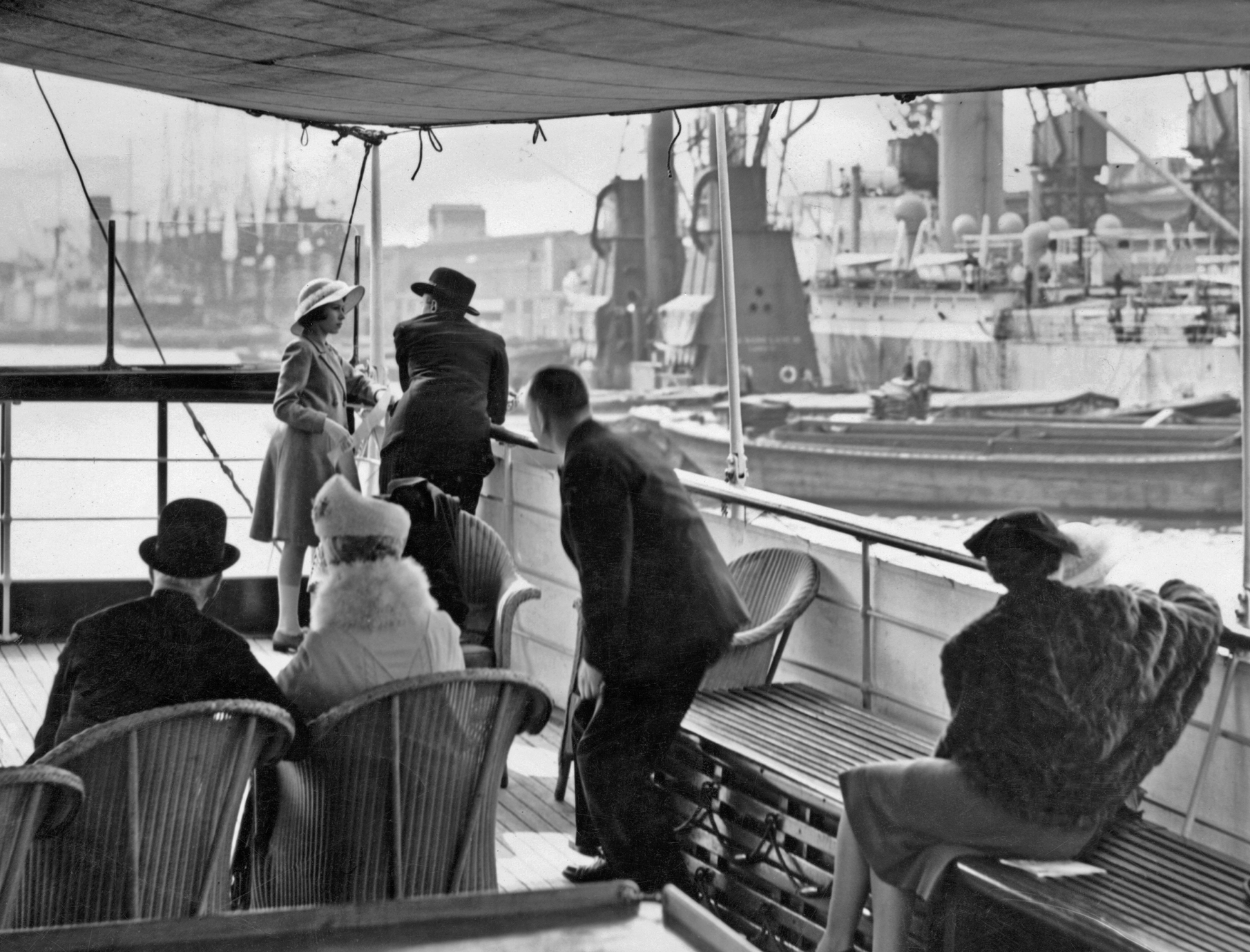
1952: Princess Margaret heads out of Clarence House on royal duties with the Comptroller of her mother’s household, Peter Townsend. The romance between the Princess and the Group Captain may have started as early as 1947 when they went riding together during the royal tour of South Africa. Credit 104

27th June 1953: Fashion was the excuse for putting the Princess on this magazine cover when US newspapers were discussing her romance, but British newspapers were ignoring the story. The news broke in London on 3rd July.

“Princess Margaret is great news value,” wrote Cecil Beaton in his diary when he took this photograph of the Princess wearing a Christian Dior ball gown in Buckingham Palace on the occasion of her twenty-first birthday in the summer of 1951. “She likes dressing up, flirtations, going to nightclubs until all hours. Her ‘press’ is rather scandalous. The American papers [are] most anxious for any snippets they can get of her…” Credit 107

Anthony Eden and Winston Churchill tried hard to look like friends when they posed on the steps of Downing Street in May 1954. But behind the scenes, Eden, 56, was plotting to force the 79-year-old prime minister to step down. Churchill, for his part, had no intention of retiring before he was 80. Credit 108


A photograph identified in Queen Mary’s own handwriting. The Queen looked after her nine-month-old granddaughter early in 1927 while Elizabeth’s parents were touring New Zealand and Australia. Credit 109

1st May 1939. Ten days after her thirteenth birthday and ten weeks before she met Prince Philip at Dartmouth Naval College, Princess Elizabeth (standing in ankle socks) visited London’s docks, sailing along the River Thames aboard the steamer St. Katharine. This was one of her regular educational excursions to get a taste of the world outside the Palace that were organised by her grandmother, Queen Mary (seated second from left, with her back to the camera), and her Scottish nanny Marion Crawford (far right in the fur stole and black hat). Credit 110

Marion Crawford, “Crawfie,” the beloved governess of Elizabeth and Margaret, on her retirement in 1949 after 17 years of loyal service. Credit 111

The book that made her a traitor. Credit 112


Lady Elizabeth Bowes Lyon as portrayed in 1923, aged 23, by the society photographer Vandyk. She had a softness that set her apart from the flappers of the jazz and cocktail age. “Holding hands in a boat,” said one of her friends. “That was her idea of courting.” Credit 113

The newly married Bertie and Elizabeth, the Duke and Duchess of York, in April 1923 on their honeymoon at Polesden Lacey in Surrey. Credit 114

September 1940. Queen Elizabeth and her husband inspect the crater of a bomb which damaged much of the North Wing of Buckingham Palace. The palace was bombed 16 times in World War II. “I’m glad we’ve been bombed,” the Queen declared. “It makes me feel I can look the East End in the face.” Credit 115

The Queen Mother and her corgi Honey at the Castle of Mey on the northeast tip of Scotland, “this romantic looking castle down by the sea,” which she decided to purchase and restore in the summer of 1952. Credit 116



A Hardy Amies flared and pleated day dress with a waist belt worn by Queen Elizabeth II at a civic reception in Broken Hill, Australia, in March 1954. Credit 117

A fine example of Winston Churchill’s vivid and swashbuckling brushwork was The Goldfish Pond at Chartwell, exhibited at the Royal Academy in the summer of 1948. But did his obsessive gazing beneath the surface reflect his grief over the death of his little daughter Marigold? Credit 118

Clementine Churchill with the couple’s fourth child, their beloved daughter, Marigold, who died from septicemia when she was less than three years old. Credit 119

Graham Sutherland, sometimes joined by his wife Kathleen (top right), came to Chartwell for eight sittings at which he made charcoal sketches and oil studies—as well as these photographs of his cantankerous subject from different angles. Credit 120

Sutherland was careful never to let either of the Churchills get sight of his portrait while he was painting it. He took all his sketches and photographs back to his studio where, it turned out, he was more interested in depicting what crumbling physical reality had to show than popular heroic stereotypes. Credit 121

30th November 1954, Westminster Hall. “This portrait,” growled Winston Churchill as he turned his back on Parliament’s birthday gift to him of Graham Sutherland’s portrait, “is a remarkable example of modern art…” pausing to encourage the derisive laughter from the audience that he wanted. Credit 122

American newspapers had first broken the Townsend-Margaret story in June 1953, ahead of the more reticent British press, and they maintained their interest to the end of the saga. Credit 123

Final encounter. Peter Townsend, surrounded by crowds, press and police on 1st November as he leaves his London lodgings following the announcement of Princess Margaret’s decision not to marry him. Credit 124

At Churchill’s request, Queen Elizabeth II gave her first prime minister a signed copy of this photograph of her smiling and waving in her carriage in November 1952 on her way to the Opening of Parliament. He kept it by his bed for the rest of his life. Credit 126



